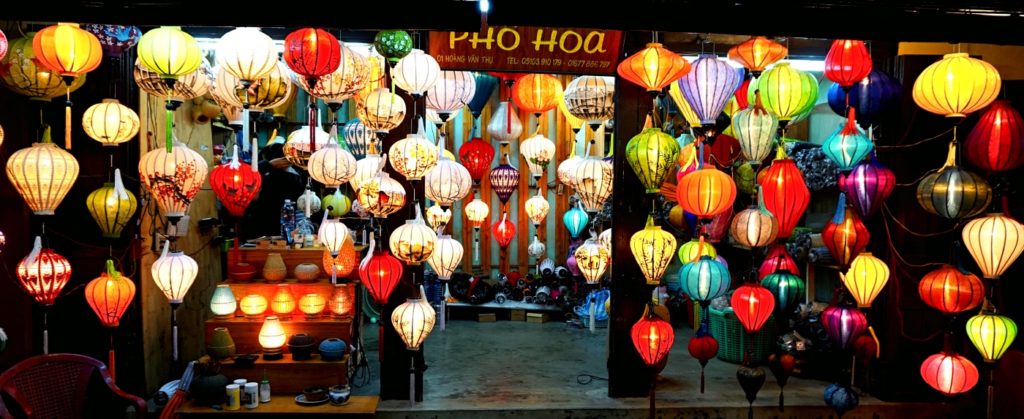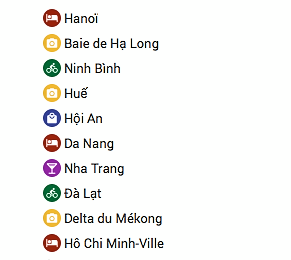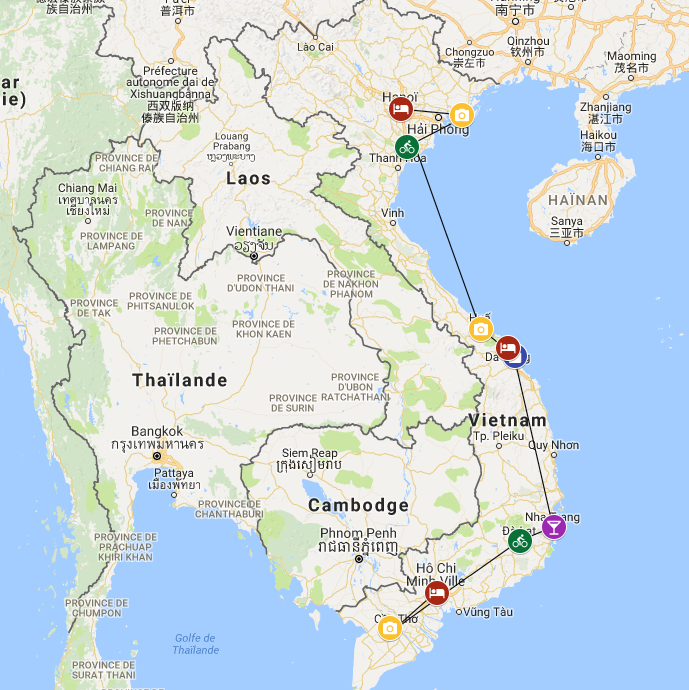5 weeks itinerary in Vietnam

Viet Nam is a surprisingly vast and diverse country with a population of over 90 million people. It has a rich culture and many traditions and customs that are proudly showcased by vietnamese throughout the nation. We ended up spending over 5 full weeks in VietNam and yet we couldn’t make it to visit all the interesting places in the gorgeous corner of the world.
Getting into Vietnam is fairly simple, whenever you come from. Plenty of direct flights connect Ho Chi Minh City and Hanoi (the southern and northern epicenters of Vietnam) with the rest of the worlds, whereas other popular options for entering the country include buses in the norther region from China or Laos and via boat or buses (or a mix of the two) from Cambodia in the southern region.
If you plan to stay in the country for less than 30 days, the Visa Process is voided for tourist (depending on the nationality). However if you wish to stay longer you need to apply for a regular Visa. You must apply in advance and obtain an invitation letter as well as go through the formalities at customs (you are entering a communist country and the bureaucracy is indeed slow). Luckily EU citizens can also apply for an EVisa, hence obtaining online all the permits needed to stay up to 3 months in Vietnam.
Sadly, Viet Nam is usually associated with the war that devastated the country in the 70s, but we really suggest everyone to put apart any prejudice or misconceptions they might have and just fully immerse in the incredibly rich culture, delicious culinary scene, ancient history, unique traditions and marvellous landscapes that VietNam has to offer.
5 weeks Itinerary in Vietnam
We landed in Vietnam just in time to visit Ha Noi during TET festival, commonly known as Chinese New Year and we soon discovered that the celebrations are taken very seriously, as the whole country literally shut down for one week. It took us longer than expected to leave the charming capital, but we finally started to move south, passed by Ninh Binh & Hue to discover imperiel Vietnam, stopped a bit longer in Hoi An for tailors, enjoyed the fresh air of Dalat for running and little by little covered the whole length of the nation. This is how we spent our 5 weeks in Vietnam and we believe that it would make an itinerary as good as any (we just missed Sapa, which would have been great to visit)


Ha Noi
Days: 🛏️🛏️🛏️🛏️🛏️🛏️🛏️ – Our Rating: ⭐⭐⭐⭐
Ha Long Bay
Days: 🛏️🛏️ – Our Rating: ⭐⭐⭐
Ninh Binh / Tam Coc
Days: 🛏️🛏️ – Our Rating: ⭐⭐⭐⭐
Huè
Days: 🛏️🛏️ – Our Rating: ⭐⭐⭐⭐
Hoi An
Days: 🛏️🛏️🛏️🛏️🛏️ – Our Rating: ⭐⭐⭐⭐⭐
Da Nang
Days: 🛏️ – Our Rating: ⭐⭐
Nha Trang
Days: 🛏️🛏️🛏️🛏️ – Our Rating: ⭐⭐⭐
Dalat
Days: 🛏️🛏️🛏️ – Our Rating: ⭐⭐⭐
Ho Chi Minh City
Days:🛏️🛏️🛏️🛏️🛏️🛏️ – Our Rating: ⭐⭐
Mekong Delta
Days: 🛏️🛏️🛏️ – Our Rating: ⭐⭐⭐
How to move around in Viet Nam
Unlike some, we do not drive motorbikes, hence we never contemplated a popular choice among backpackers in Vietnam: renting (or buying) a motorbike and travel on the road. You surely have a lot of freedom, but it’s not everyone’s cup of tea. Roads aren’t the best and traffic is maniac. There are many other ways to explore the country after all.
By Train
The Reunification Express that connects Ha Noi to Saigon is a glorious railway. It symbolize the struggles that people had to endure in order to achieve peace and helps remembers the sorrow past. In runs through the nation and you can see not only the landscape changing, but the people and the culture as well.
The journey takes about 36 hours and there are 4 to 5 trains a day which stop at all the major cities along the state. The vagons are divided into several classes and prices, but for as much as we loved travelling by train, the “bed” seats are really hard and having a good night sleep is almost impossible. The upper beds in the 3 level bunks bed have so little space that you can only lie down on it as a mummy.
It is best to book your seats in advance via the official website and then simply collect the tickets at the train station (it’s all in Vietnamese, but with a bit of exercise you’ll figure out how to use it!)
By Bus
There are dozens of companies offering long haul buses throughout Vietnam. One of the most popular option are the so called “sleeping buses”. A strangely setup bus with almost completely reversible seats on two different levels. They are quite comfortable and the usually include water and snack. Prices are still competitive, but travelling by bus is more expensive than by trains.
You also need to consider that traffic is real annoyance in Vietnam and that some of the roads (especially in the mountain regions) are far from being driver friendly.
By Plane
Flying is usually the preferred mean of transportation between Ha Noi and Saigon, but you might want to consider heading to the airport for shorter journeys such as Dalat to Saigon (as we did it) or Ha Noi to Da Nang, because you can find highly competitive prices and cut down the travel times by many hours.
AirAsia and Jetstar and the most popular low cost airlines connecting all the major towns in Vietnam, but the national carrier offers interesting fares as well.

No Comments